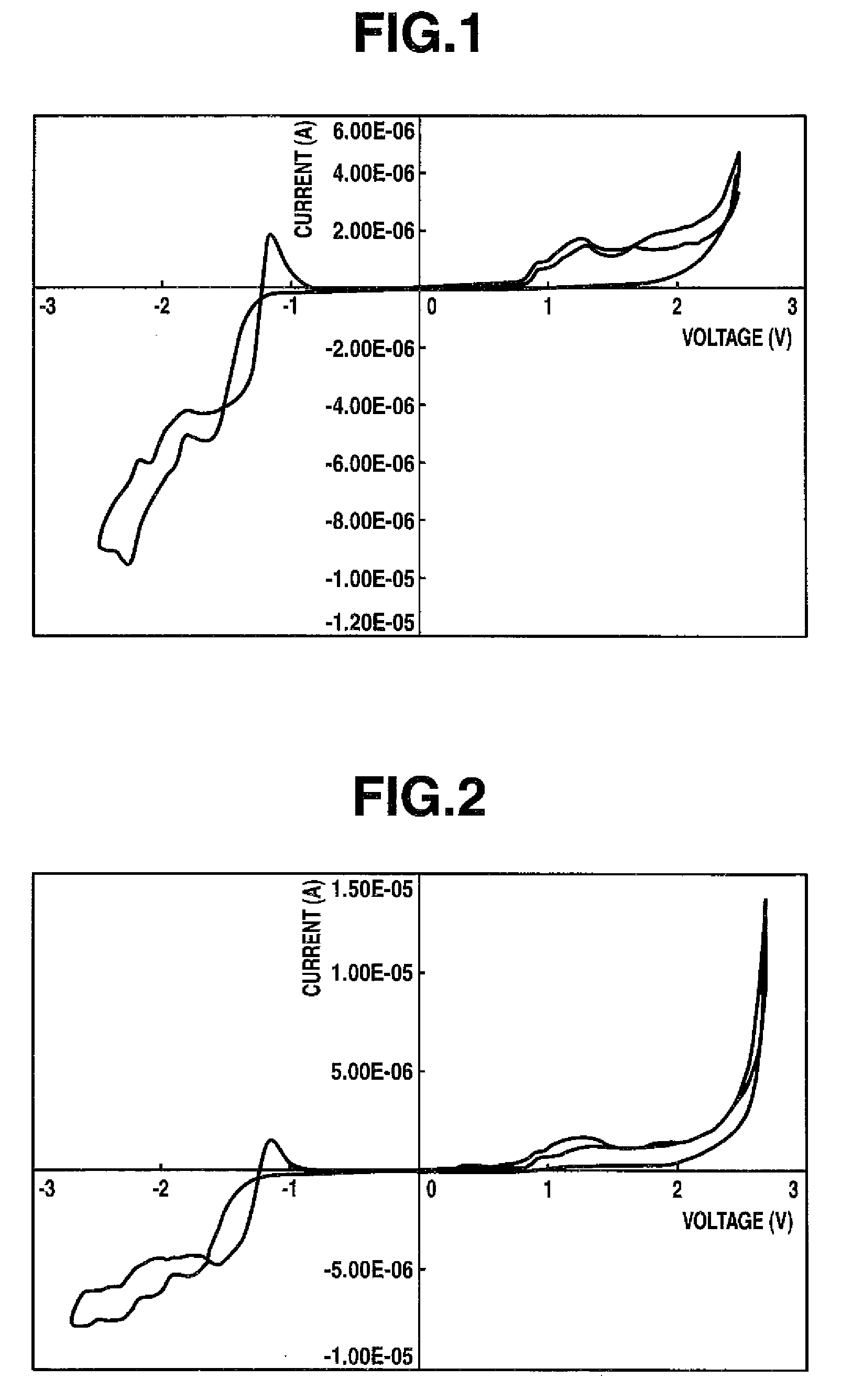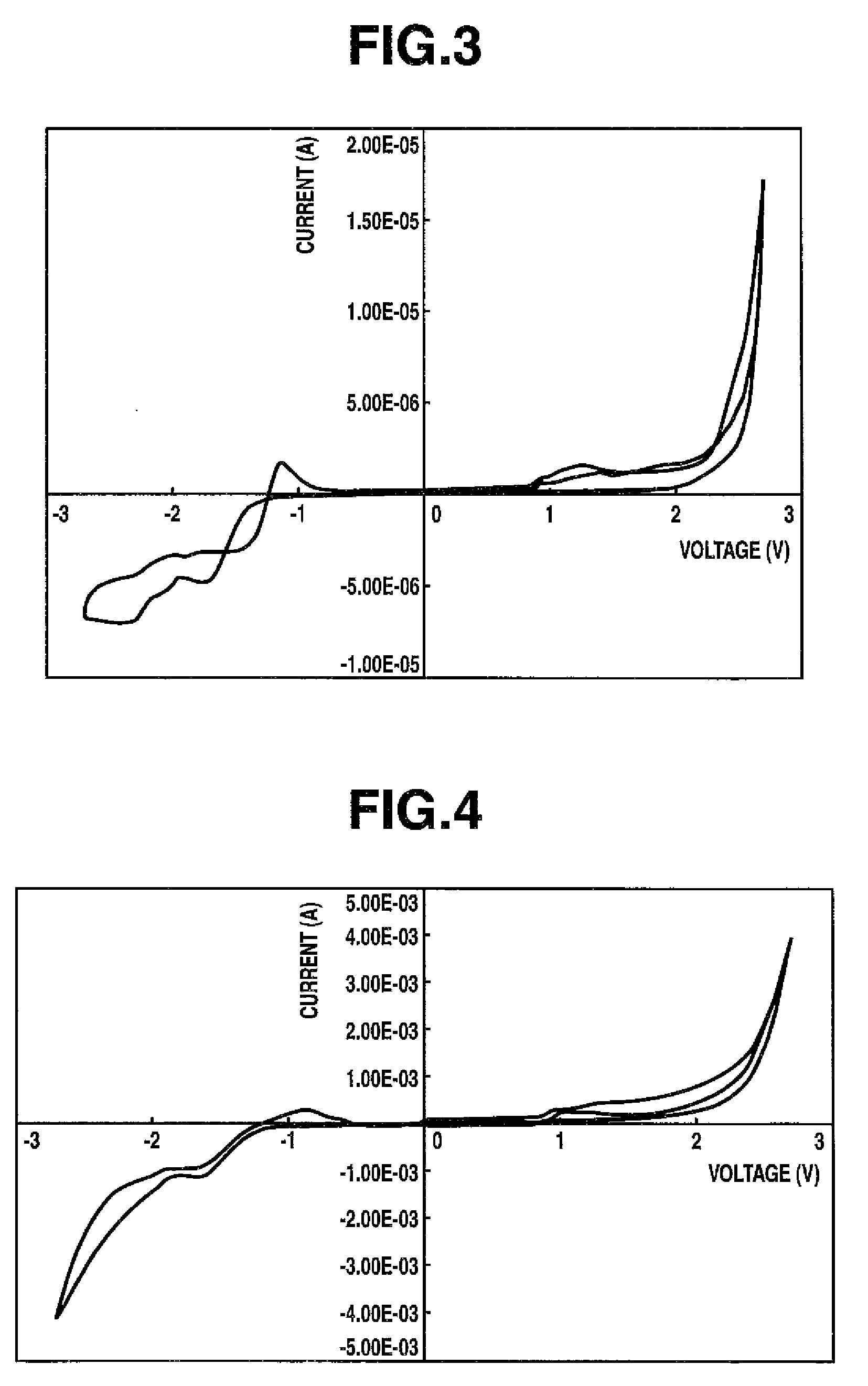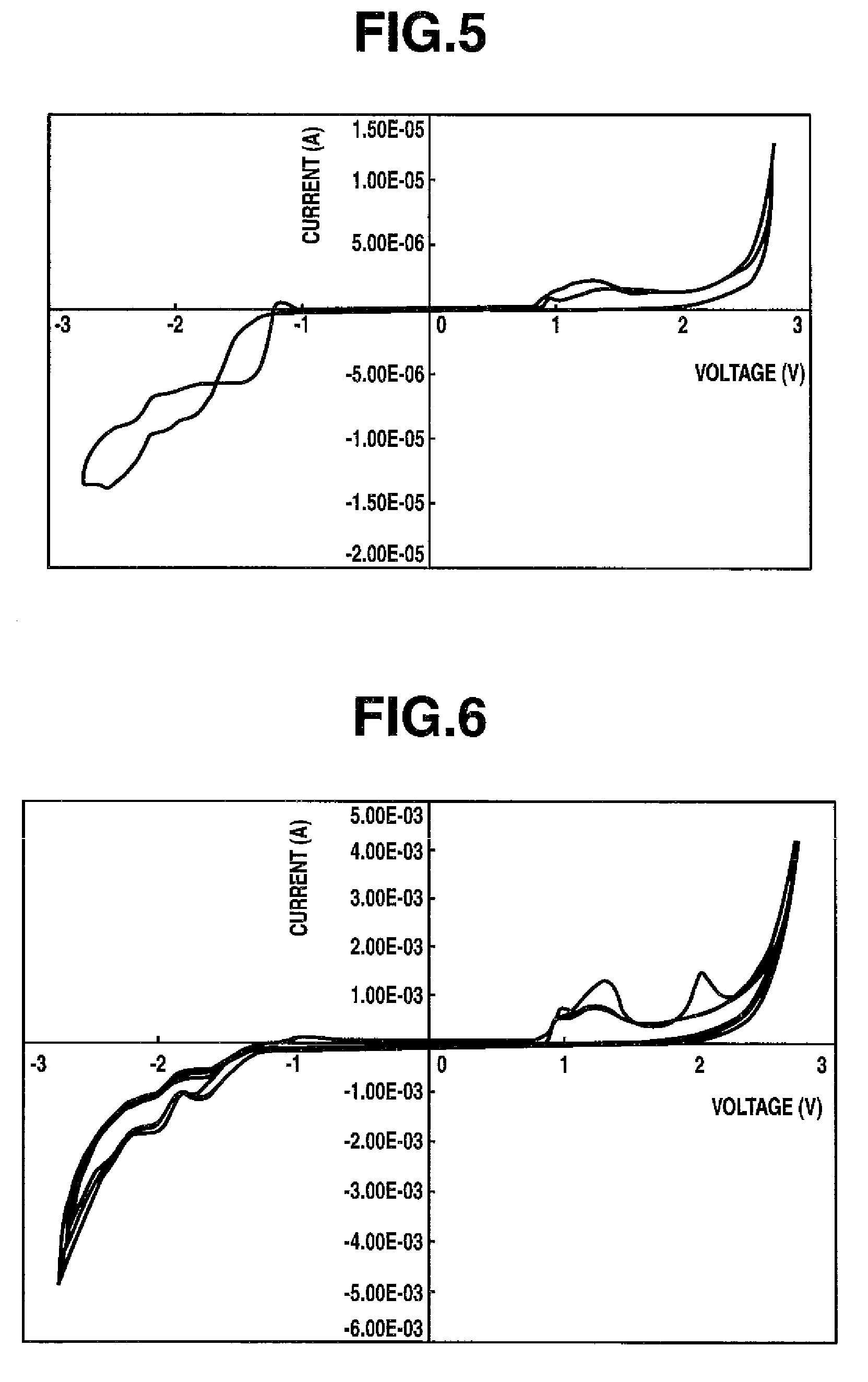Thiophene compound having sulfonyl group and process for producing the same
a technology of thiophene compound and sulfonyl group, which is applied in the direction of non-metal conductors, cell components, sustainable manufacturing/processing, etc., can solve the problems of difficult stably preparing difficult to control their structure, and difficult to achieve the effect of p-type and n-type semiconductors with a single material, and good solubility or dispers
- Summary
- Abstract
- Description
- Claims
- Application Information
AI Technical Summary
Benefits of technology
Problems solved by technology
Method used
Image
Examples
examples
[0248]The present invention will hereinafter be described more specifically based on Examples, although the present invention is by no means limited to the following Examples.
[0249]The following analyzers and analysis conditions were used in the Examples.
[1] Gas Chromatography (GC)
[0250]Model: Hewlett Packard: “HP6800”, column: “DB-624” (30 m×0.53 mmφ×3 μm), column temperature: 40 (retained for 0 min.) to 290° C. (retained for 0 min.), 10° C. / min. (ramp rate), injection port temperature: 180° C., detector temperature: 250° C., carrier gas: helium, detection method: FID method.
[0251]Model: “LX-1000” (JEOL Ltd.), detection method: FAB method.
[0252]Model: “JMS-SX102A” (JEOL Ltd.), detection method: FAB method.
[3]1H-NMR
[0253]Model: “JNM-A500” (JEOL Ltd.), measurement solvent: CDCl3, DMSO-d6.
[0254]Model: “AVANCE 400S” (Bruker), measurement solvent: CDCl3, DMSO-d6.
[4]13C-NMR
[0255]Model: “JNM-A500” (JEOL Ltd.), measurement solvent: CDCl3, DMSO-d6.
[0256]Model: “A...
example 2
Synthesis of 3,4-bissulfonyl-2,5-bis(tributyl-stannyl)-thiophenes
[0283]
[0284]One of the 3,4-bissulfonylthiophenes 2a-f obtained as described above was placed in a reaction vessel, followed by dissolution in THF under a nitrogen atmosphere. The solution was cooled to −78° C. n-Butyl lithium (1.58 M hexane solution, 2.20 equivalents, commercial product) was gradually added dropwise, and at the same temperature, the resultant mixture was stirred for 1 hour. Subsequently, tributylstannyl chloride (2.50 equivalents, commercial product) was added dropwise, followed by stirring for 3 hours. After completion of the reaction, a disodium hydrogenphosphate / sodium dihydrogenphosphate buffer which had been adjusted to pH 7 was added to quench the reaction, and the reaction mixture was extracted with ethyl acetate. The organic layer was washed with saturated brine and dried over anhydrous sodium sulfate. The solvent was eliminated, and the resultant crude product was purified by a silica gel colu...
example 3
Synthesis of 3′,4-bissulfonyl-[2,2′; 5′,2″; 5″,2″′; 5″′,2″″]-quinquethiophenes
[0303]
[0304]One of the 3,4-bissulfonyl-2,5-bis(tributylstannyl)-thiophenes 3a-f obtained as described above and copper(I) chloride (2.2 equivalents, commercial product) were placed in a reaction vessel. They were dissolved in THF under a nitrogen atmosphere, followed by the addition of 2-iodobithiophene (2.1 equivalents) at room temperature. Subsequently, the reaction mixture was heated, and under reflux conditions, was stirred for 20 hours. After the reaction, the reaction mixture was allowed to cool down to room temperature. Subsequent to the addition of an aqueous solution of hydrochloric acid, the mixture was extracted with ethyl acetate. The organic layer was washed with saturated brine and dried over anhydrous sodium sulfate. The solvent was distilled off under reduced pressure, and the resultant crude product was purified through a silica gel column (ethyl acetate:hexane=1:2) and further by GPC to a...
PUM
| Property | Measurement | Unit |
|---|---|---|
| Length | aaaaa | aaaaa |
| Length | aaaaa | aaaaa |
| Fraction | aaaaa | aaaaa |
Abstract
Description
Claims
Application Information
 Login to View More
Login to View More - R&D
- Intellectual Property
- Life Sciences
- Materials
- Tech Scout
- Unparalleled Data Quality
- Higher Quality Content
- 60% Fewer Hallucinations
Browse by: Latest US Patents, China's latest patents, Technical Efficacy Thesaurus, Application Domain, Technology Topic, Popular Technical Reports.
© 2025 PatSnap. All rights reserved.Legal|Privacy policy|Modern Slavery Act Transparency Statement|Sitemap|About US| Contact US: help@patsnap.com



